“Between stimulus and response there is a space. In that space is our power to choose our response.” –Victor E. Frankl
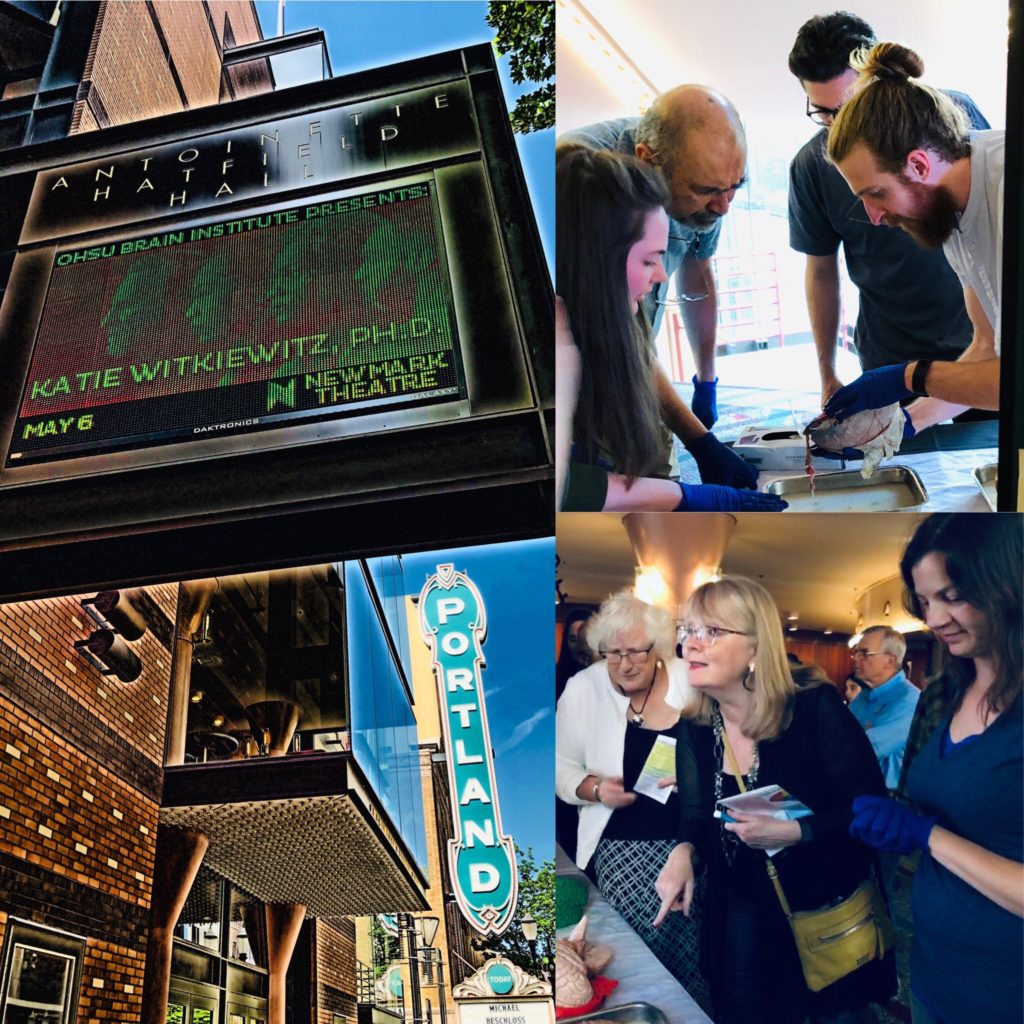
Spring is here! And spring in Portland means fascinating talks by leading neuroscientists – and, of course, brains, art and questions at the Newmark Theater, where Dr. Katie Witkiewitz kicked off the 2019 OHSU Brain Awareness lecture series this week!
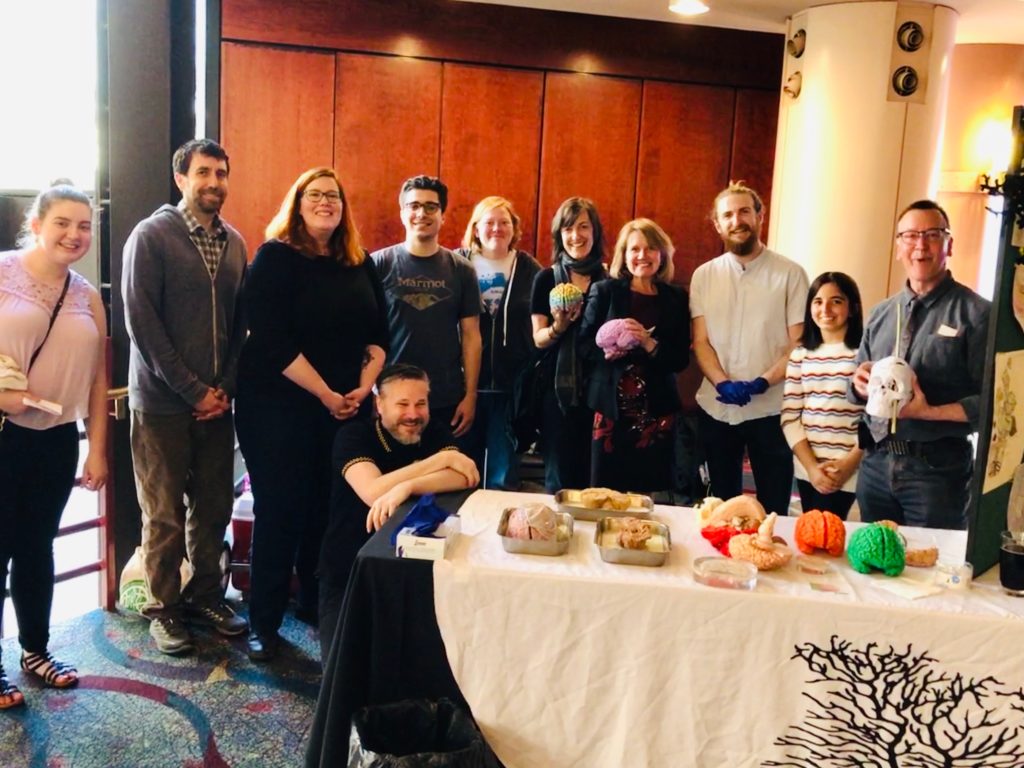
Katie Witkiewitz is a Professor of Psychology at the University of New Mexico
This year’s theme is “Mind Altering Medicine,” and next week at the Newmark (5/13), Dr. Lynne Shinto examines techniques to address the potentially debilitating side effects of drugs used to treat teen psychosis. The final talk, by Dr. Anthony Bossis on 5/20, explores whether psychedelics might lessen anxiety at the end of life.
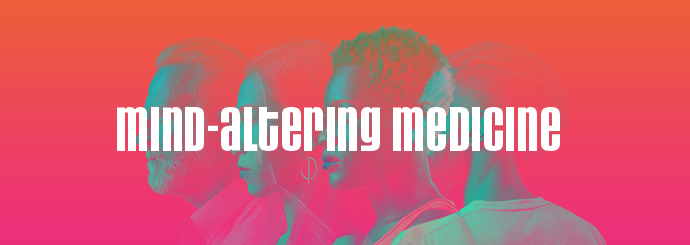
“Can we re-wire and heal our brains using natural, alternative treatments?”
GET TICKETS: OHSU BRAIN AWARENESS SERIES
Thanks to the generosity of the OHSU Brain Institute, NW Noggin is able to contribute informed outreach volunteers from Portland State University, OHSU and other collaborators, with extra brains and neuro-art projects to answer questions from audience members curious about what they’re (and we’re) learning from these absorbing, cutting edge talks…
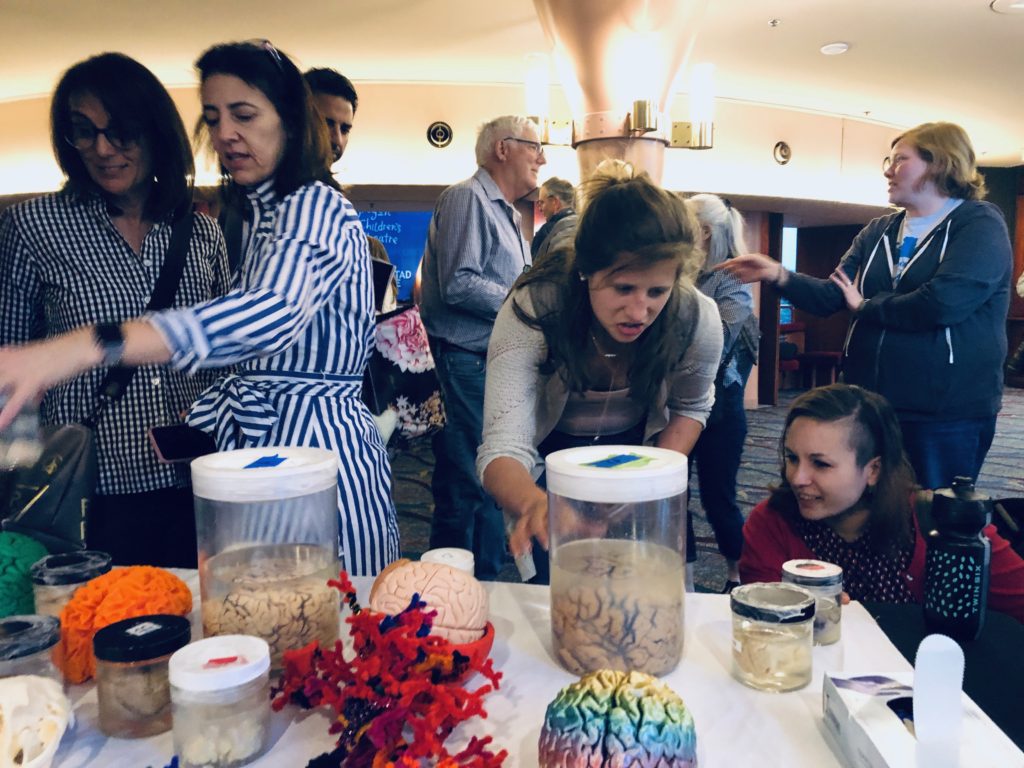
Our students were so excited to meet with Katie and discuss mindfulness, addiction, neuroanatomy and STEAM outreach before the show began!!
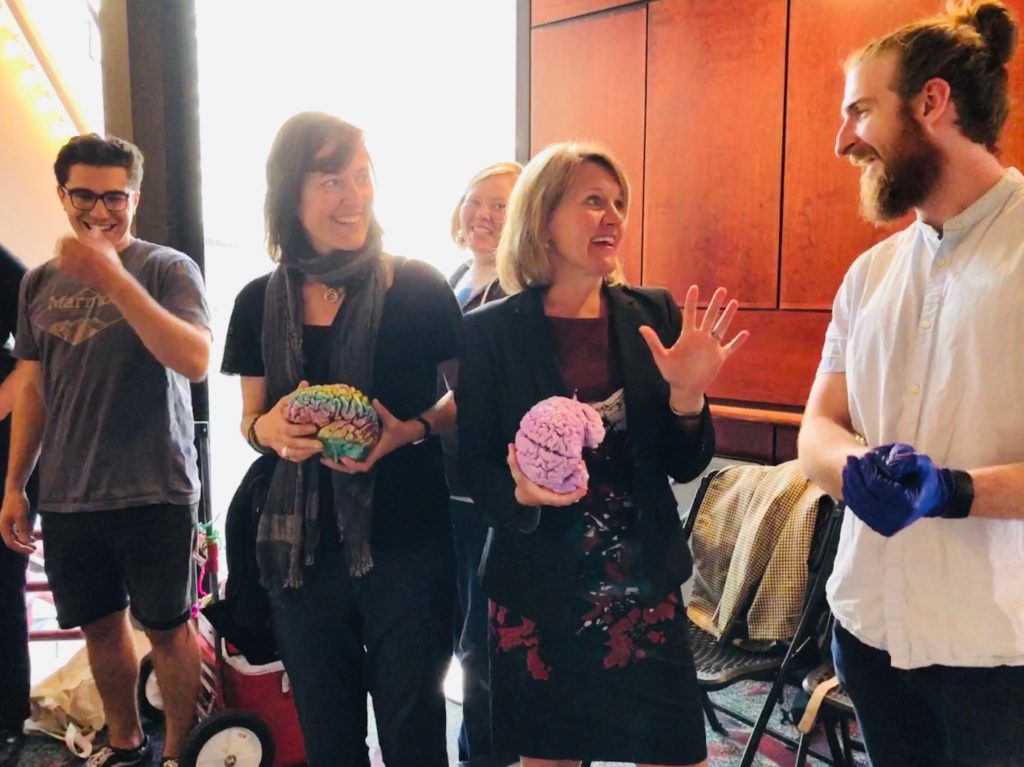
Where is the insula..?
LEARN MORE: Revisiting the role of the insula in addiction
Our volunteers were Genevieve Warner, Zach Langer, Dominique Chen and Jonathan Cuello (from the University Studies Freshman Inquiry course on the Neuroscience of Creativity and Learning at Portland State), Thomas Rounds, Damian Thomas, Chandelle Bates, Philip Bouleh and NIH BUILD EXITO scholar Emily Burgess (also at PSU), and Angela Hendrix from NW Noggin…
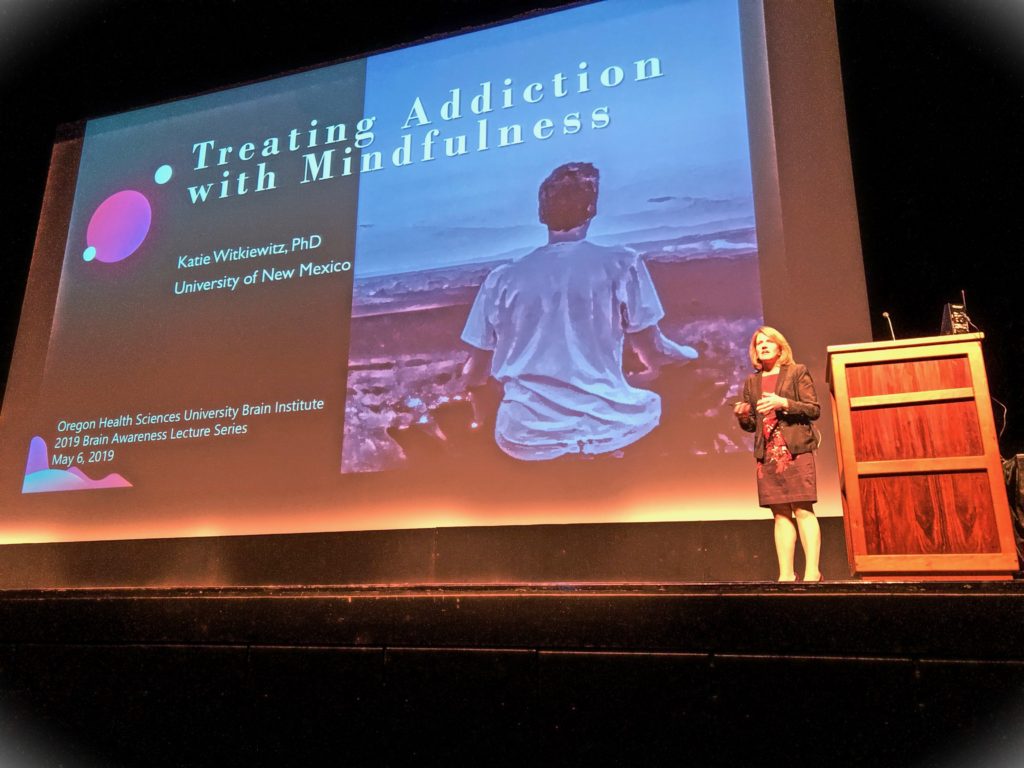
Katie’s interest in tonight’s topic began with a simple question asked over twenty years ago…
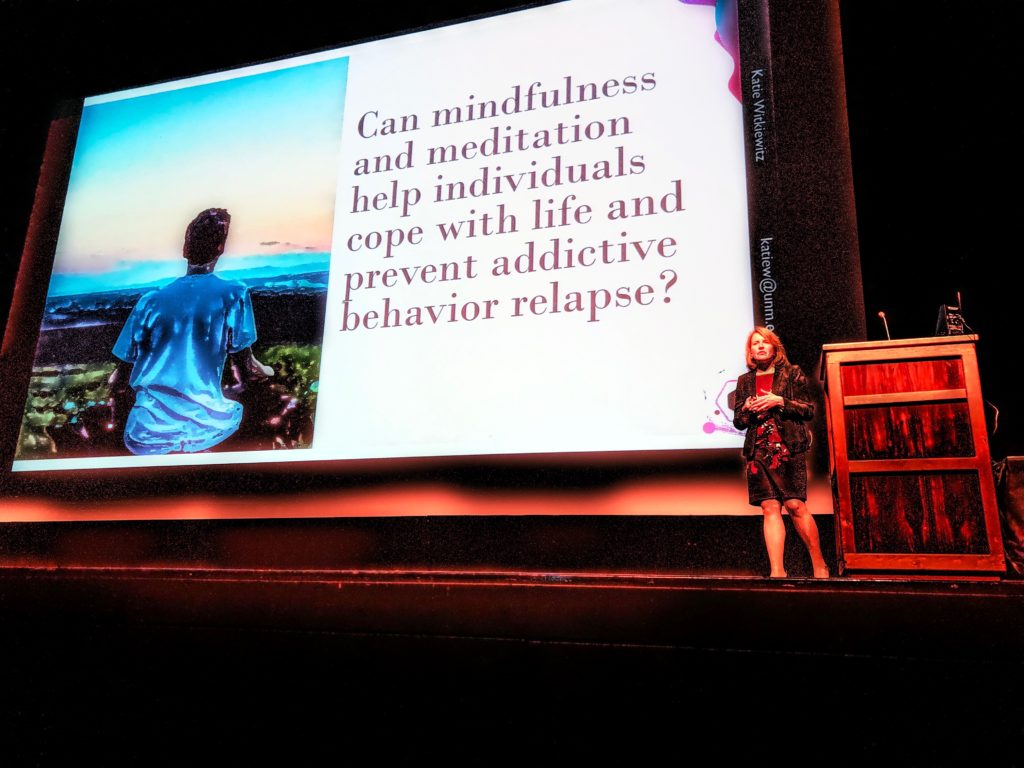
“Can mindfulness and meditation help individuals cope with life and prevent addictive behavior relapse?”
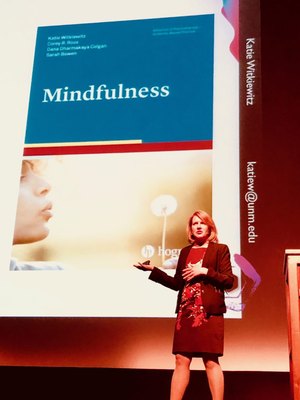
Dr. Witkiewitz wrote the book on this topic, after struggling to help clients learn effective strategies to prevent relapse. Despite a clear desire to avoid “falling off the wagon,” many can’t do it – and re-use. “We haven’t hit it well with current approaches,” said Katie.
LEARN MORE: Mindfulness: Advances in psychotherapy: Evidence-based practices
LEARN MORE: Relapse Prevention, An Overview of Marlatt’s Cognitive-Behavioral Model
LEARN MORE: Relapse Prevention and the Five Rules of Recovery
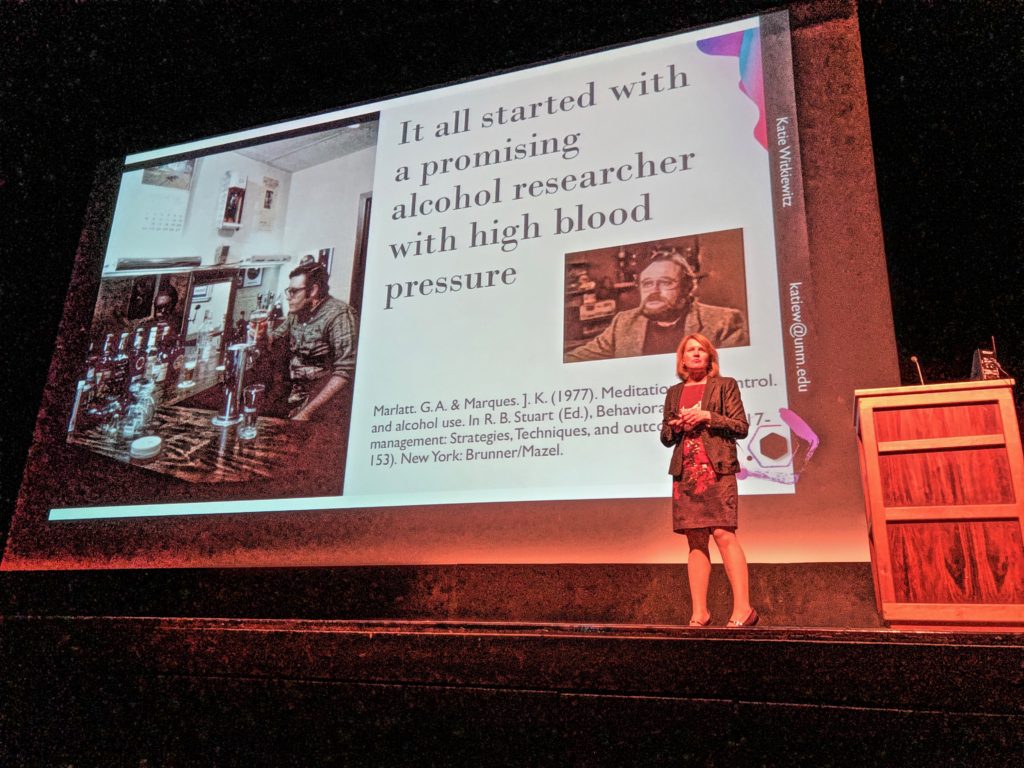
“It all started in 1977,” she continued, with a promising alcohol researcher who had high blood pressure. According to Katie, G. Alan Marlatt established the world’s first “BAR” (Behavioral Alcohol Research) lab at the University of Washington to explore strategies aimed at promoting healthier drinking behavior among college students on campus…
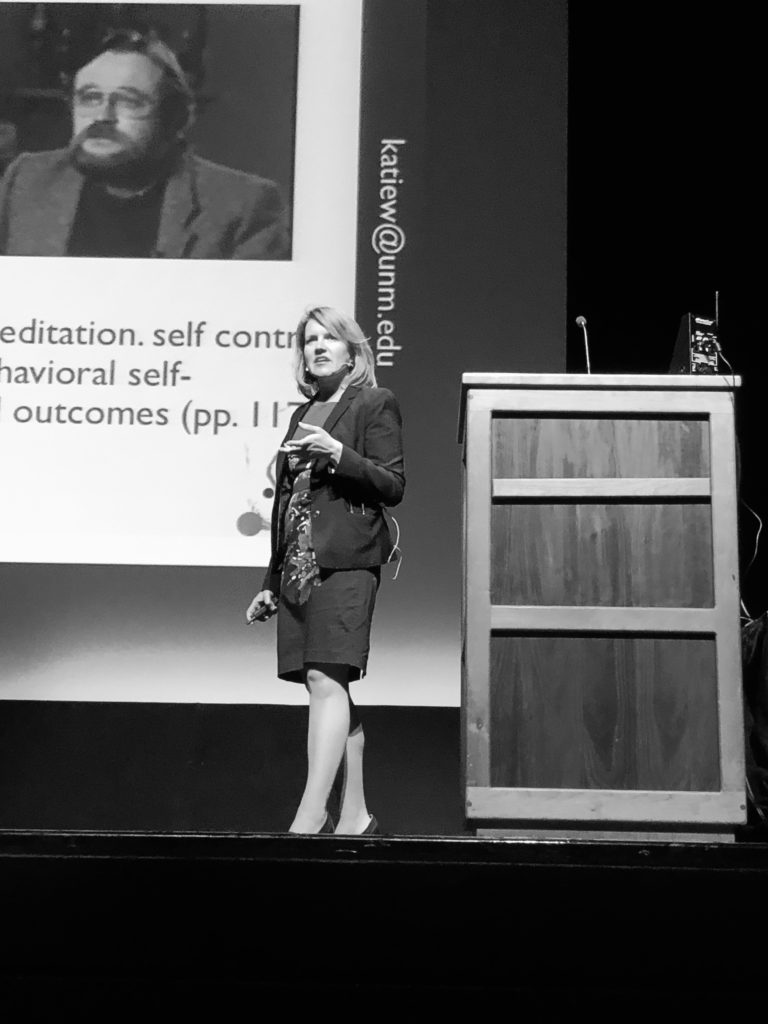
“In order to be safe, just like with driving, we should teach people about drinking…” –G. Alan Marlatt
LEARN MORE: Reducing the Harms of College Student Drinking: How Alan Marlatt Changed Approaches, Outcomes, and the Field
LEARN MORE: G. Alan Marlatt Brought Compassion to Addiction Treatment (TIME)
Marlatt did not want any medications to treat his elevated blood pressure, and instead tried Transcendental Meditation, at the time a popular meditative practice developed by the Indian yogi Maharishi Mahesh Yogi. It worked for him, and he subsequently conducted a small trial of meditation as a treatment for alcohol abuse, “which proved mildly effective.” Yet in order to obtain tenure, said Katie, “he was warned to drop all the ‘froofy’ meditation stuff…”
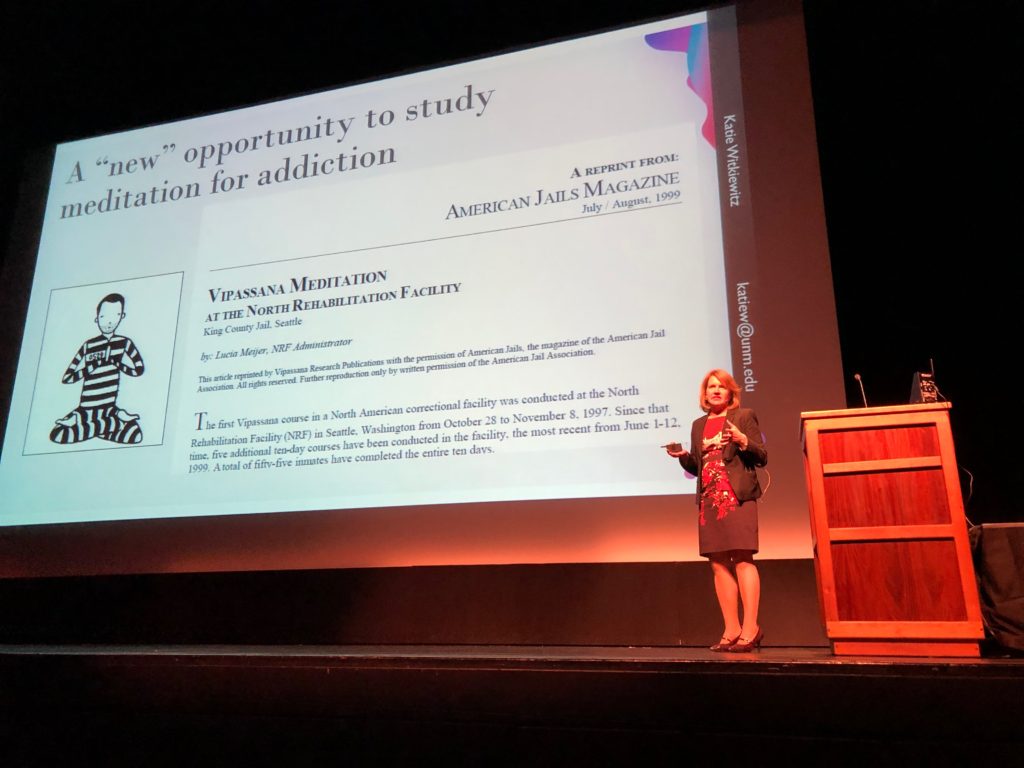
“I never really wanted tenure, to tell you the truth…the tenured people were some of, like, the least interesting.” –Robert Barry
Yet fast forward to Seattle in the 1990s, and Marlatt is afforded a new opportunity to study the effects of meditation on addiction. He works with individuals incarcerated at the minimum security King County North Rehabilitation Facility, where some undergo a ten day training in Vipassana Meditation…
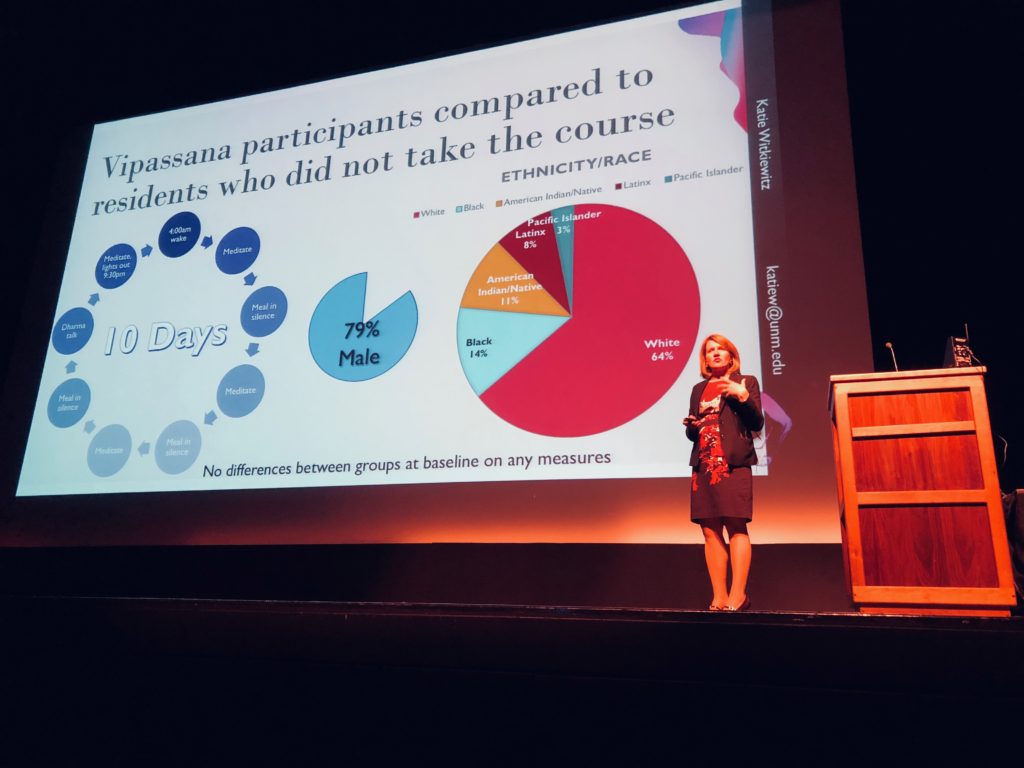
LEARN MORE: Vipassana Meditation In American Prisons
LEARN MORE: North American Vipassana Prison Project
LEARN MORE: Vipassana Meditation at NRF
LEARN MORE: Vipassana Meditation
Participants in both the meditation and control groups were similar at the start. However, afterwards, there were changes. Katie showed us a brief but compelling clip from Changing from the Inside, a documentary about the effects of Vipassana that was filmed on site…
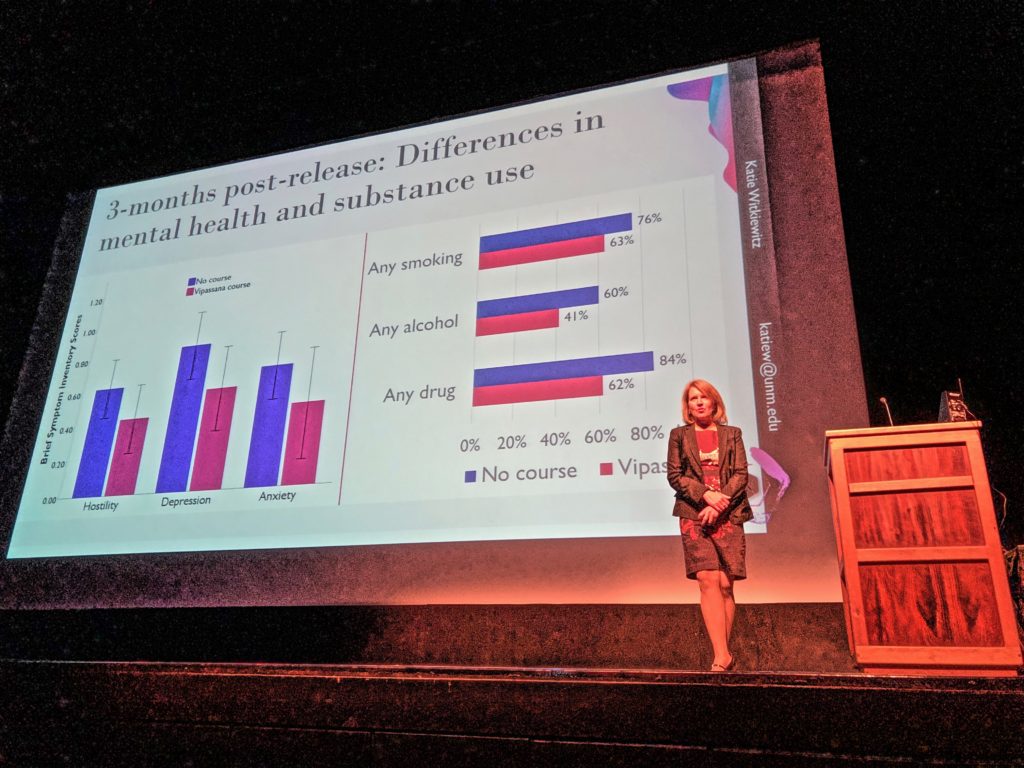
Meditation training significantly improved the participants’ mental health, reducing hostility, anxiety, and depression – and their use of drugs. It was such a powerful result that Marlatt, Katie and their colleagues sought grant funding to explore this further.
LEARN MORE: Effects of Meditation on Alcohol Use and Recidivism
Yet reviewers never seemed to be satisfied…
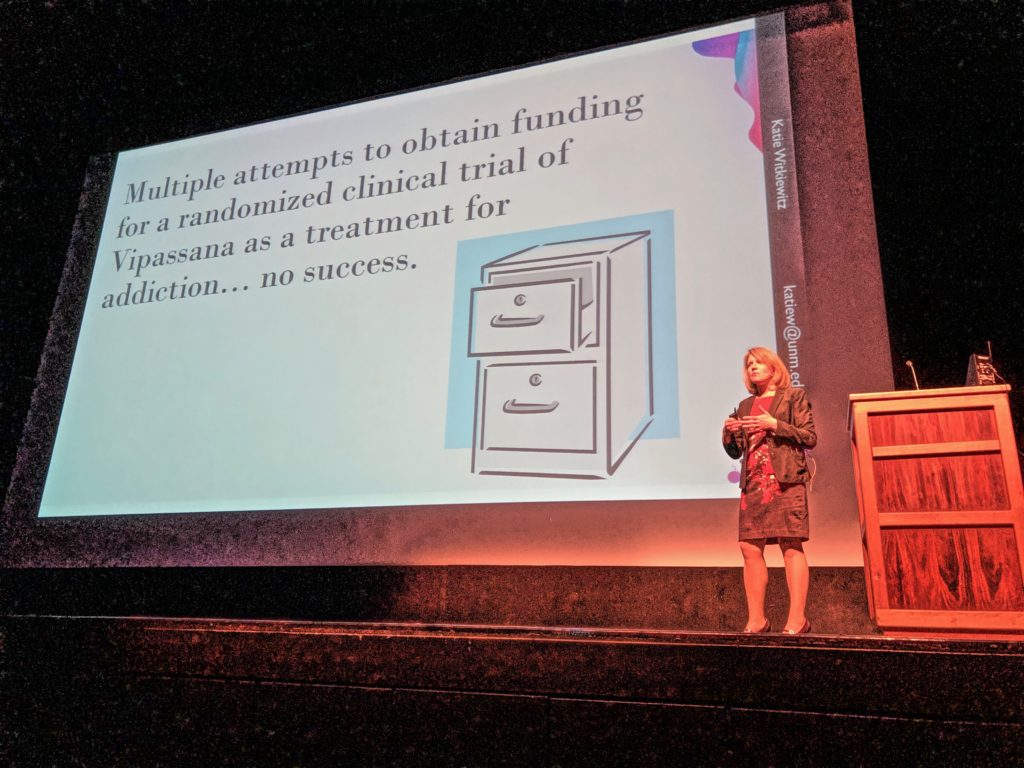
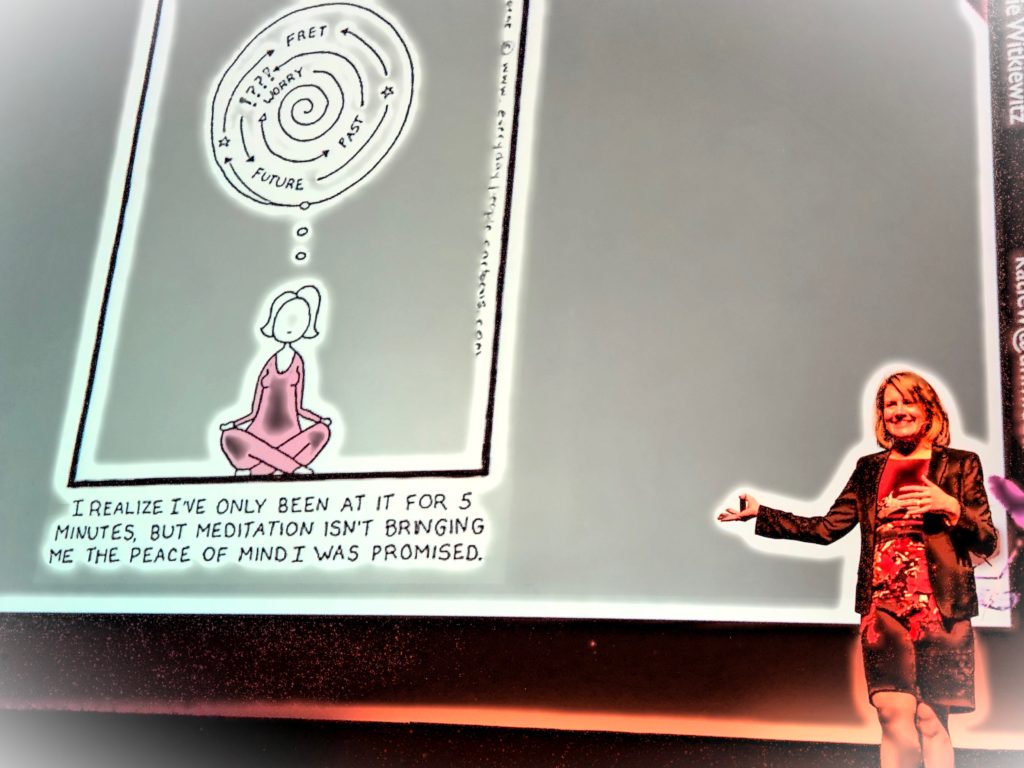
“What is this Vipassana?” they asked. “Apparently this study – and another 2000 years of data from people using meditative practices wasn’t convincing enough…”
Happily, they landed on the right language to placate funders at the National Institute on Alcohol Abuse & Alcoholism (NIAAA), calling their approach Mindfulness-Based Relapse Prevention (or MBRP) for addictive behaviors..!
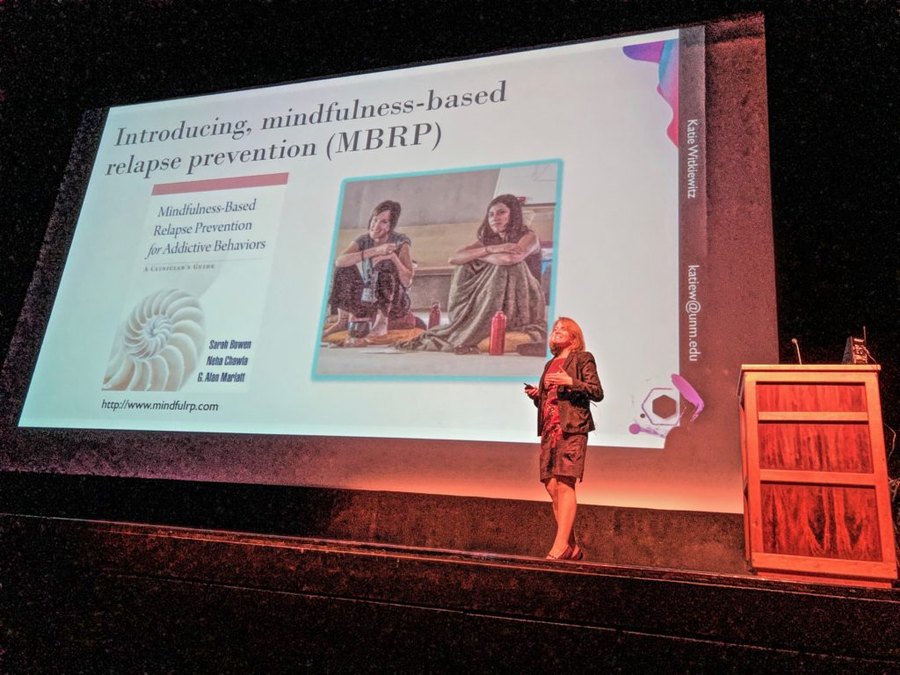
LEARN MORE: Mindfulness-Based Relapse Prevention
LEARN MORE: Mindfulness-Based Relapse Prevention for Substance Use Disorders: A Pilot Efficacy Trial
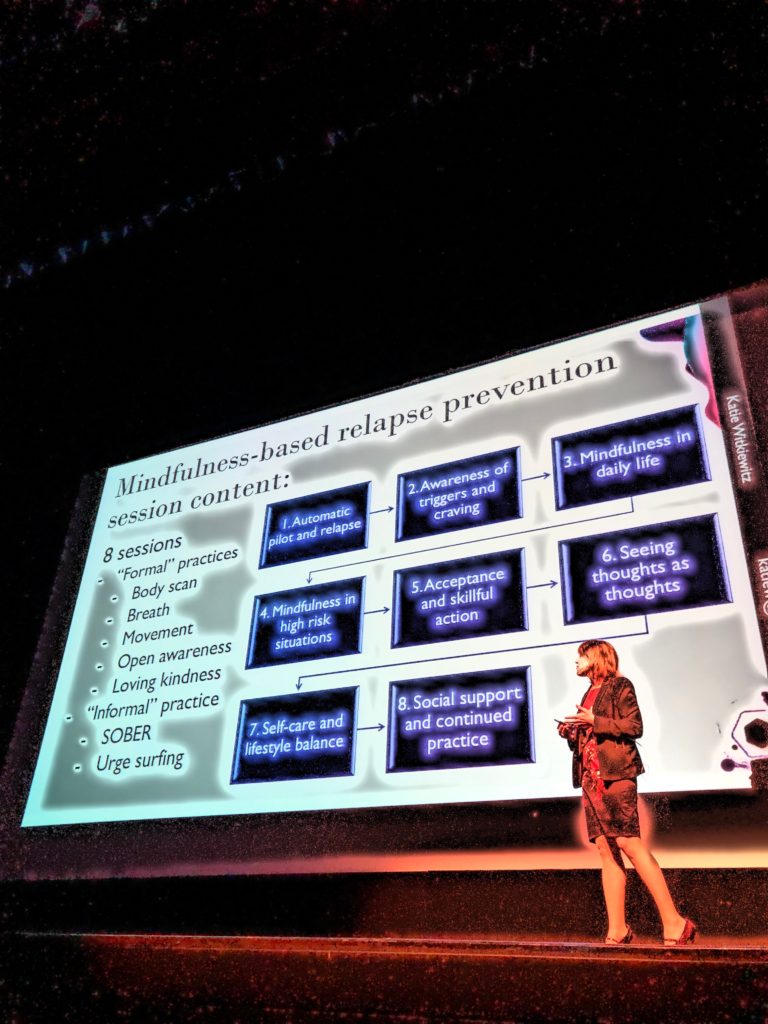
The MBRP practice involves formal sessions, with a focus on consciously “scanning” the body, breath, movement, awareness – along with kindness towards oneself and others – and also “informal” techniques for when subjects encounter “triggers” for drug use in their daily lives.
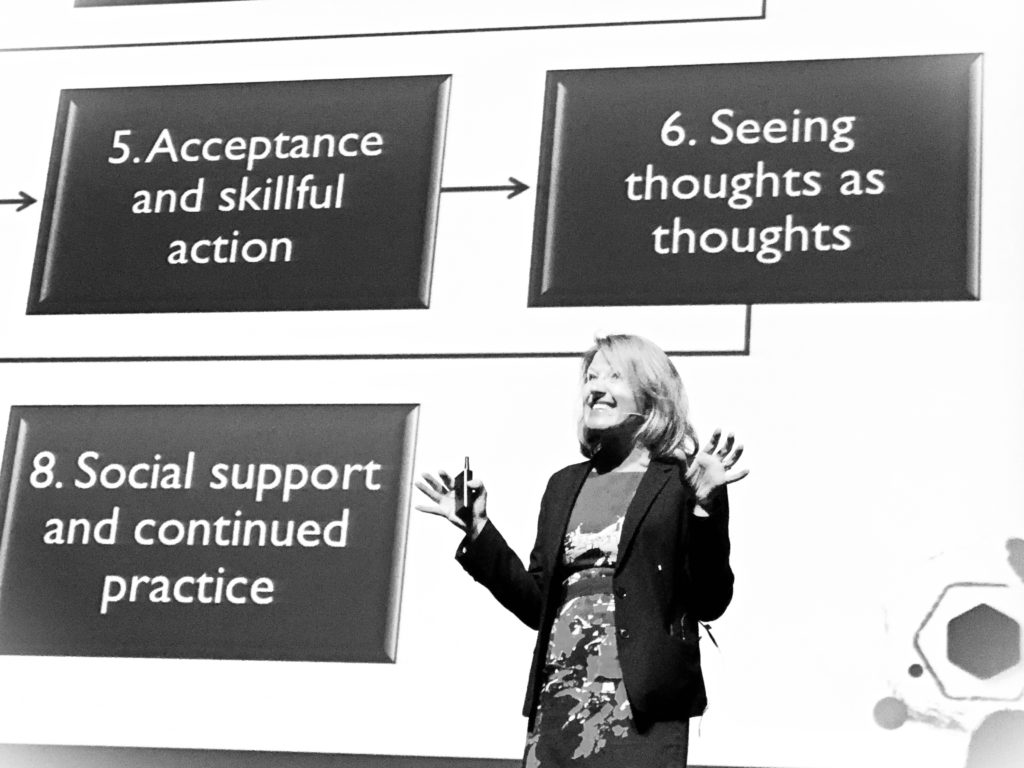
Dr. Witkiewitz led members of the Newmark audience through one such technique, known as the SOBER breathing space. “You knew something like this was coming,” she laughed…
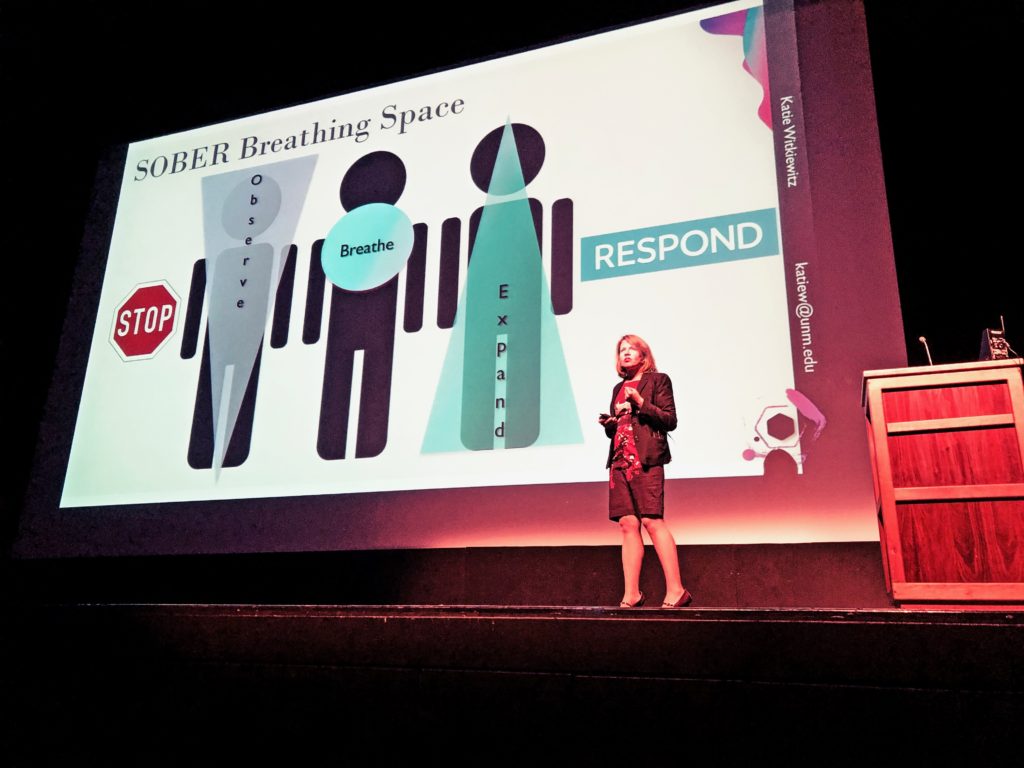
The SOBER technique: Stop, Observe, Breathe, Expand and Respond…
LEARN MORE: SOBER Breathing Space
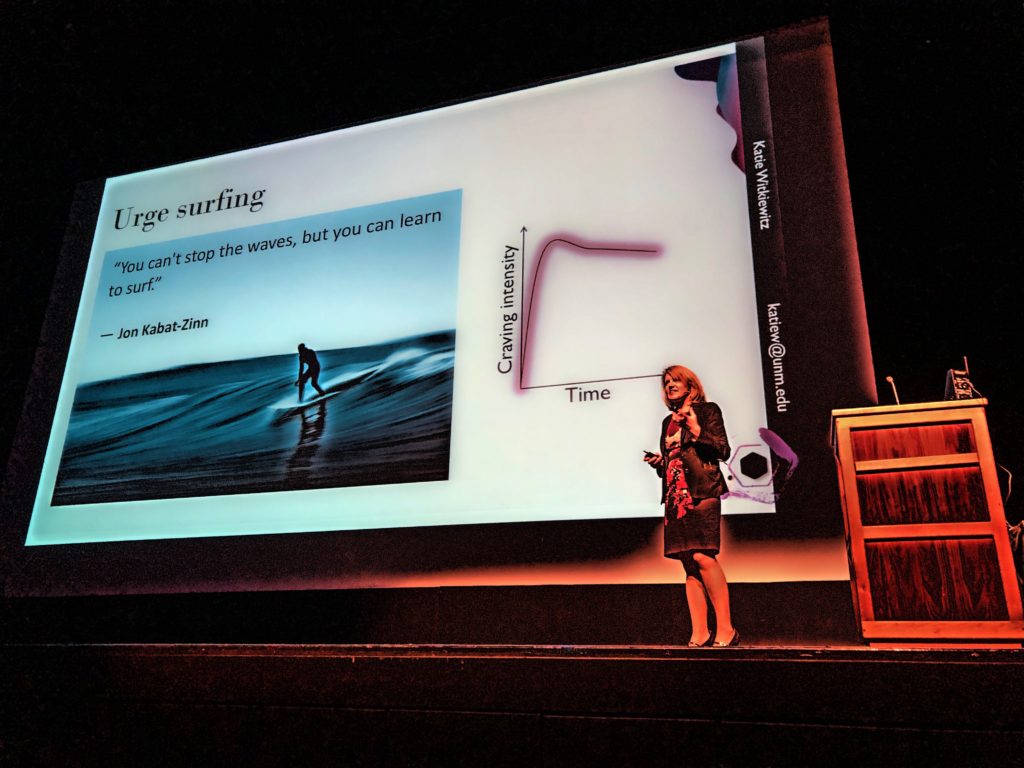
A second MBRP technique, known as “Urge Surfing,” is based on the idea that you cannot stop the urges, or cravings – but you can learn to “surf,” or regulate your emotions when they come…
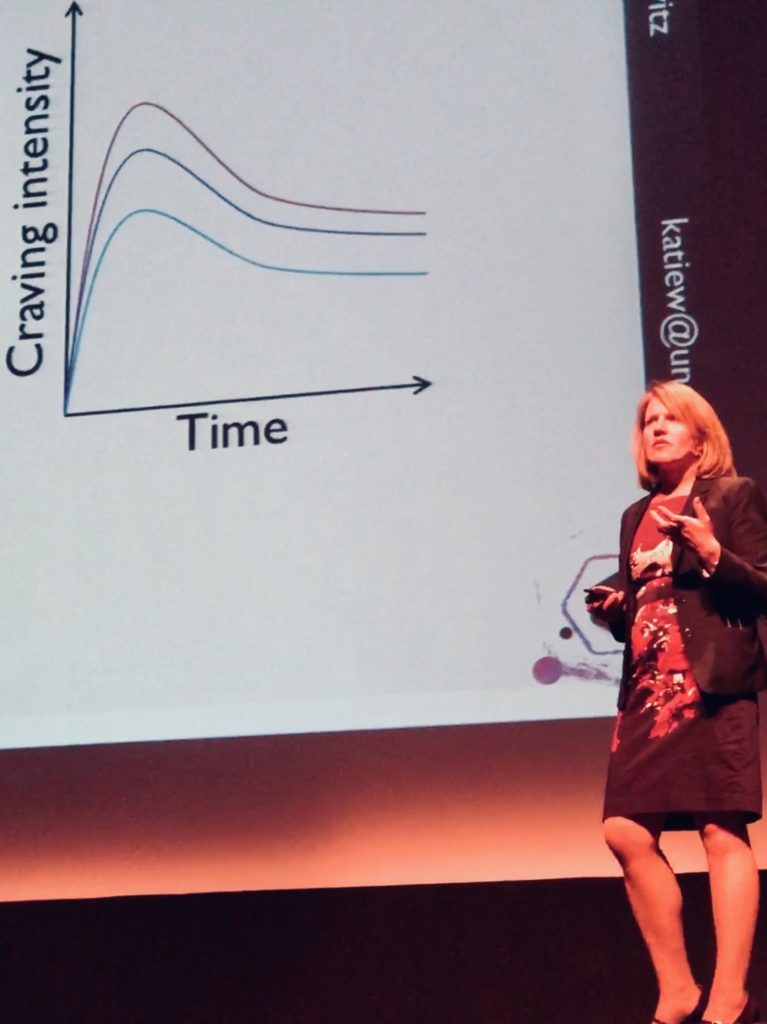
And it works!
LEARN MORE: Surfing the urge: brief mindfulness-based intervention for college student smokers
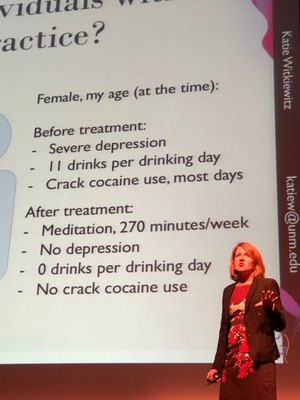
Katie was so impressed by the experiences of some of her own subjects, and clients, that she tried a Vipassana retreat herself…and did better.
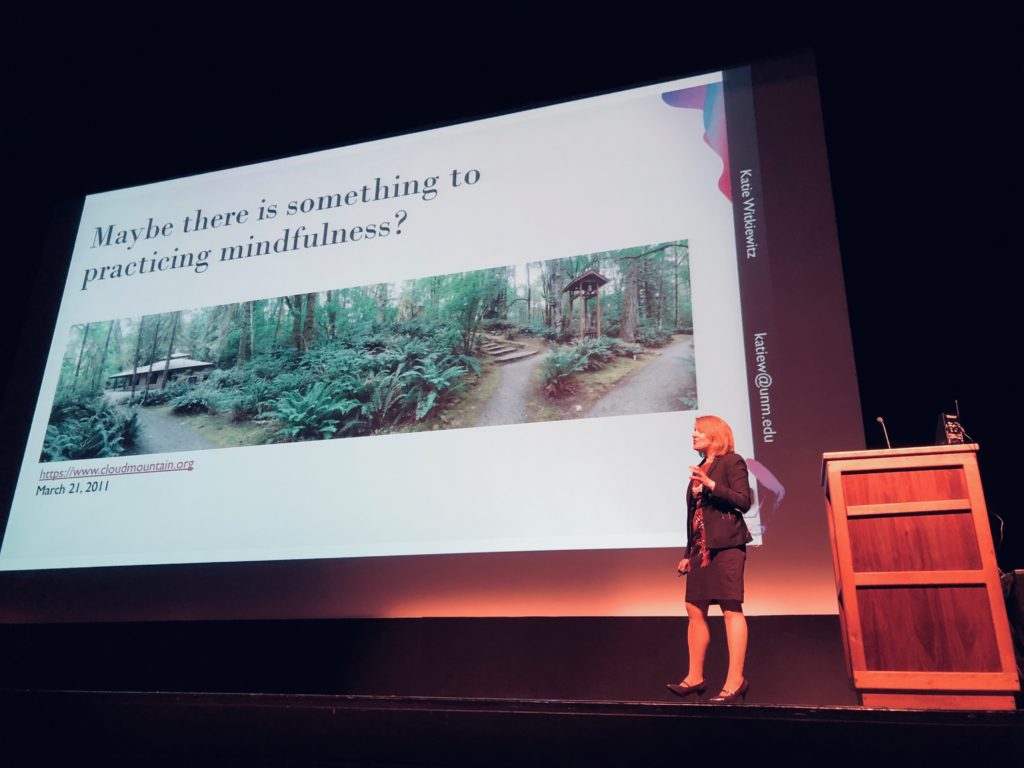
“You can’t stop the waves, but you can learn to surf.” – Jon Kabat-Zinn
Some observations from Dr. Witkiewitz: “I was questioning a lot of my own choices when I saw this mindfulness data. We all get triggered by so many things in life…”
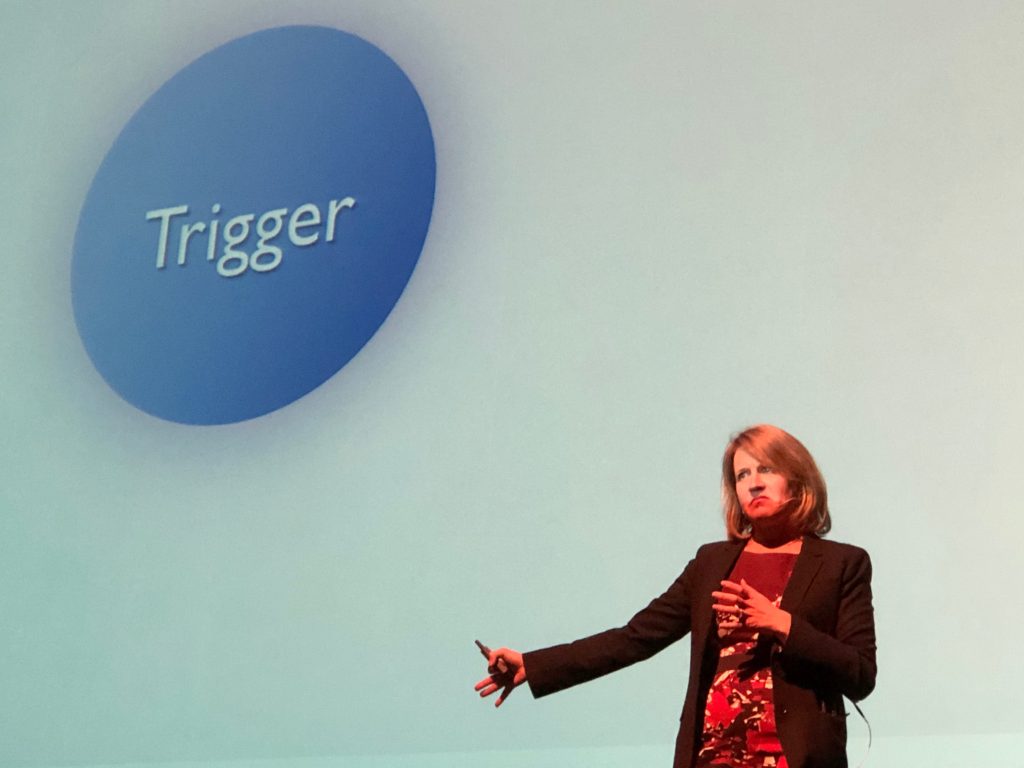
“We can become that ‘awful person’ so quickly, and reach a ‘screw it’ moment, where we just give in and let everything go. Traditional drug rehab training doesn’t cover that ‘screw it’ moment…”
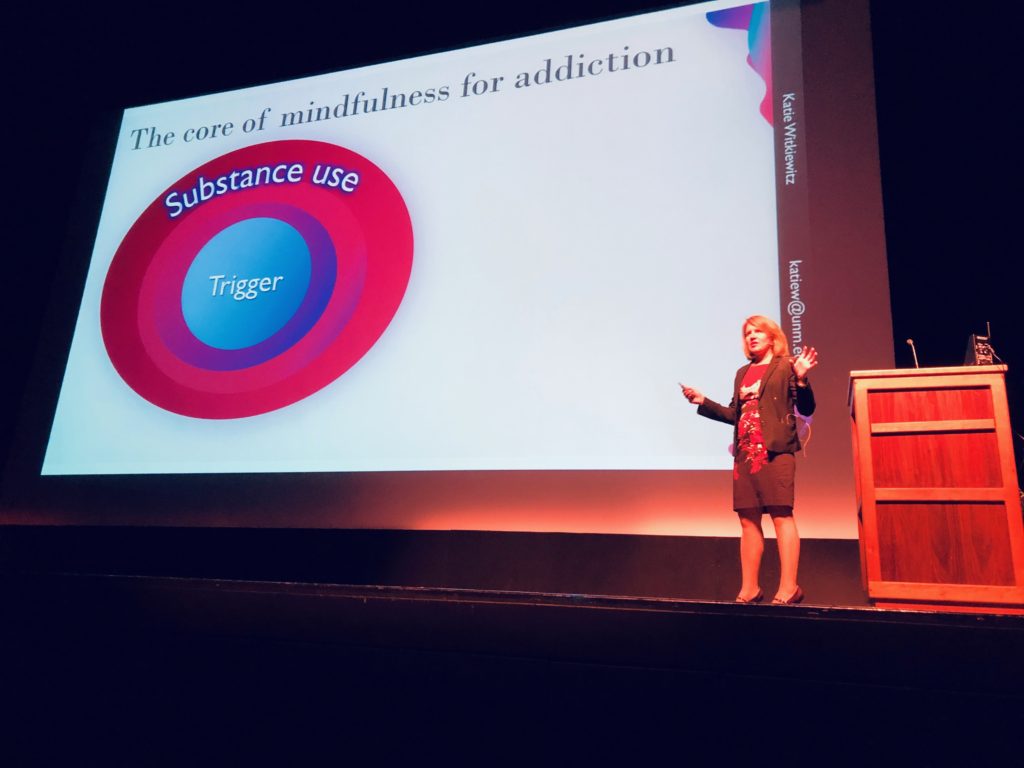
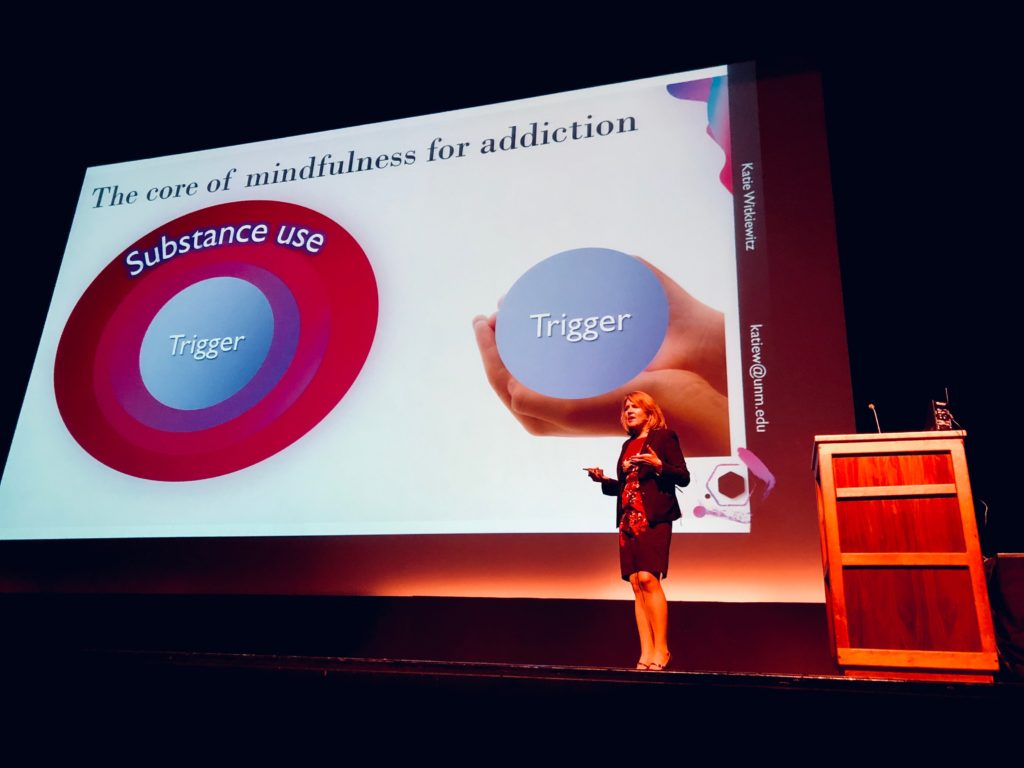
“Though what if you could just sit with it?” she asked. “Feel it, experience it, hold it, observe it, with a little bit of kindness and compassion for yourself? I don’t have to identify and be ready for every specific trigger, but I can respond by holding experience, letting it pass, and letting it go…”
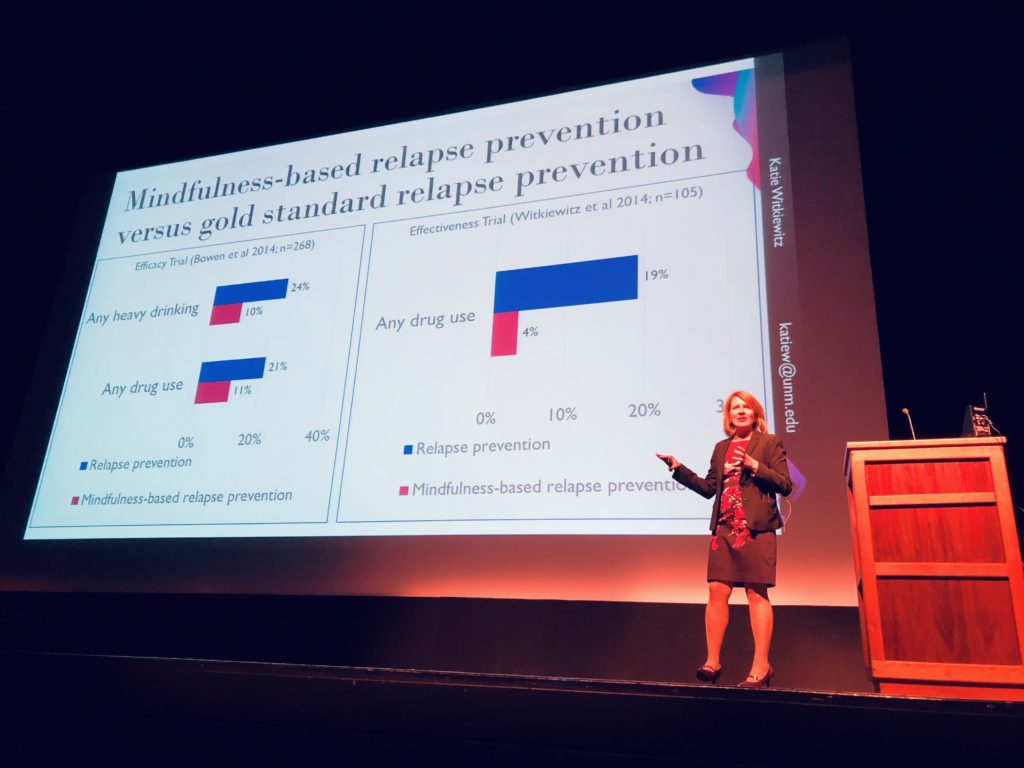
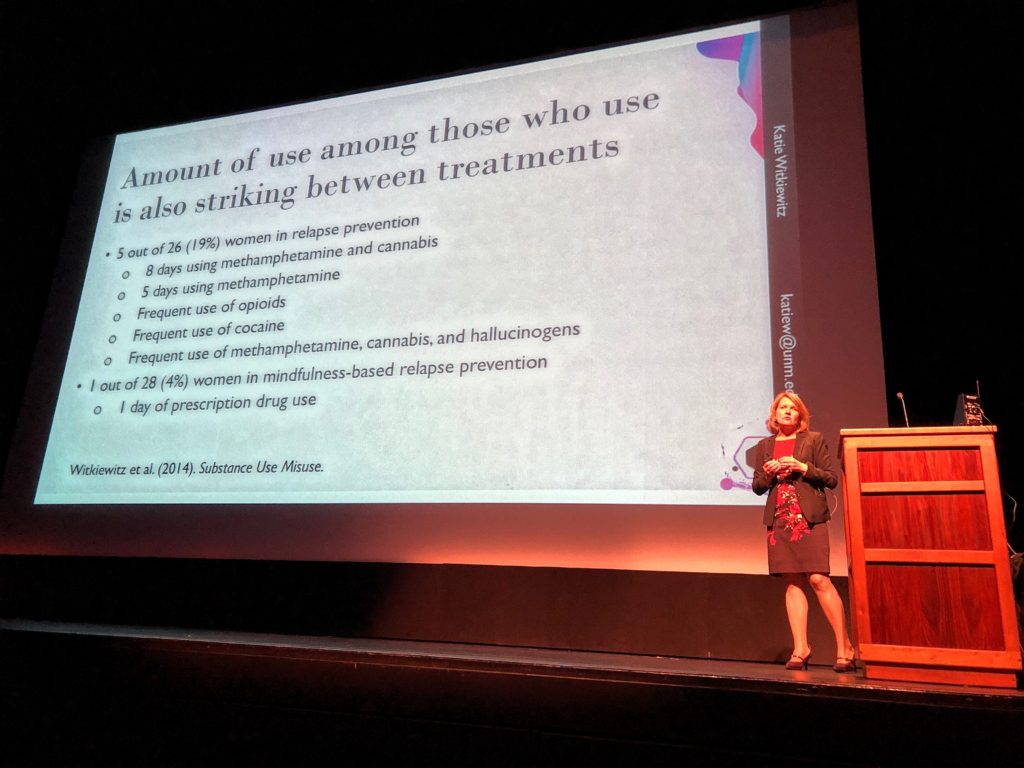
And this works! In fact, it works better than “gold standard” relapse prevention programs…
LEARN MORE: Mindfulness-based relapse prevention for substance craving
LEARN MORE: The Emerging Role of Meditation in Addressing Psychiatric Illness, with a Focus on Substance Use Disorders
LEARN MORE: Mindfulness-based relapse prevention – A meta-analysis
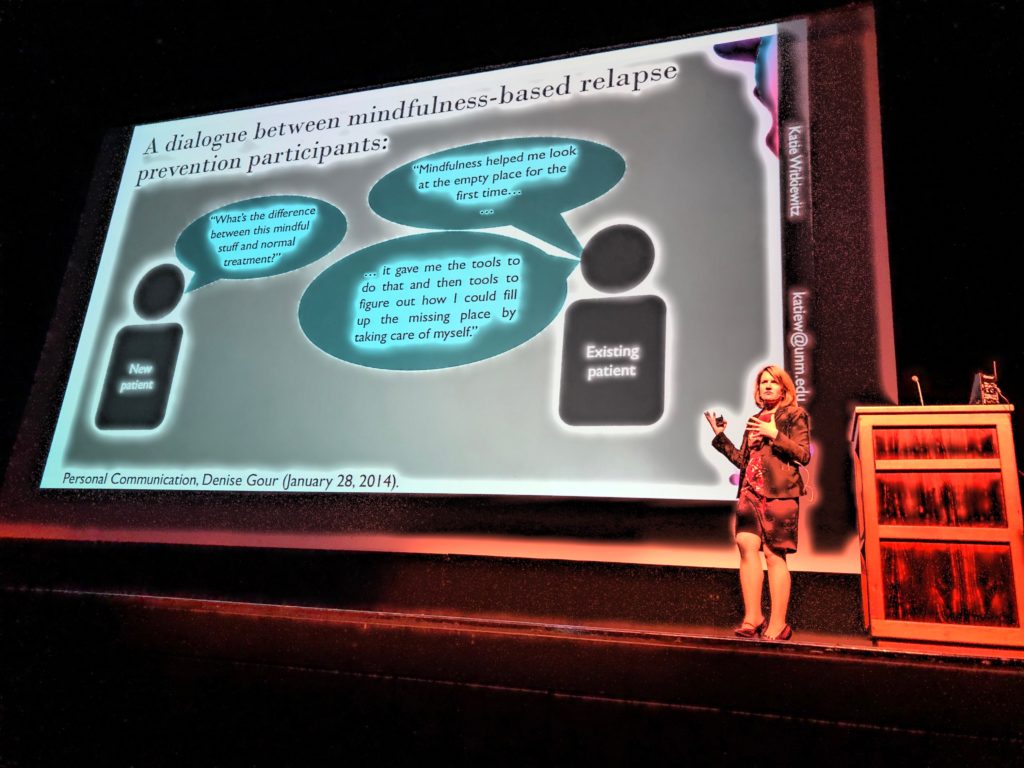
A conversation between mindfulness-based relapse prevention participants…
Mindfulness meditation is effective in treating addiction. It prevents relapse better than other approaches. So how does it work in the brain..?
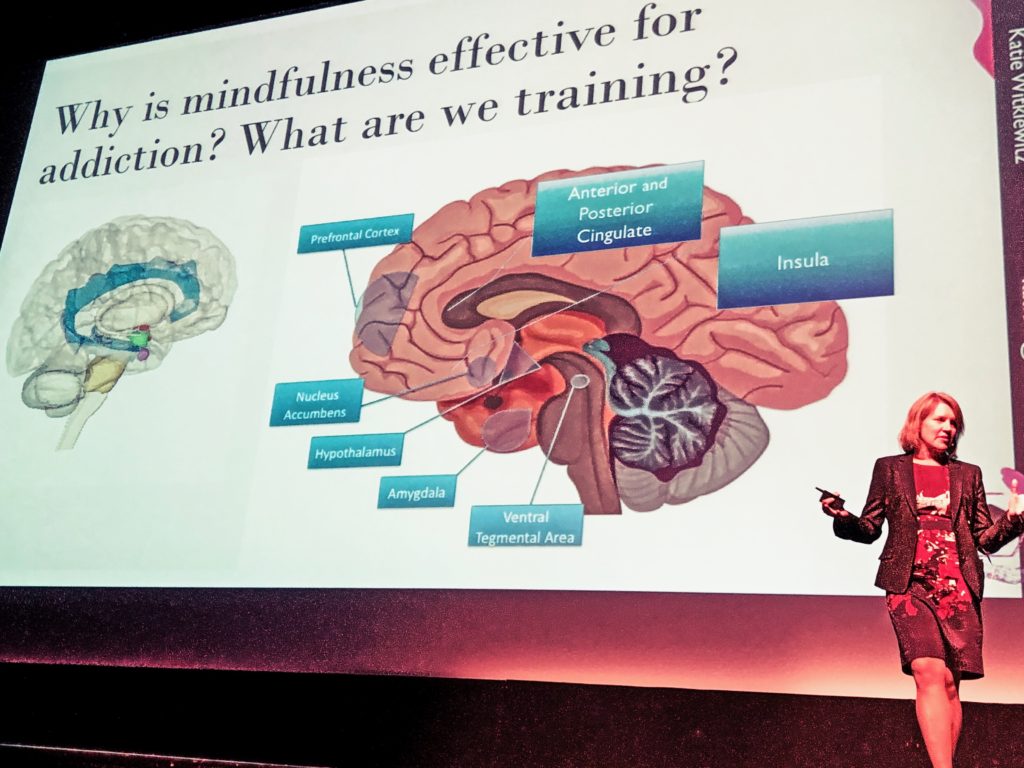
“So many different areas of the brain are impacted by addiction,” explained Dr. Witkiewitz. “So many systems are dysregulated.” Some areas, many of them subcortical (‘below the cortex,’ including the amygdala, and the nucleus accumbens), that are “involved in reward, and in habitual behavior, get strengthened“ by chronic drug use, “while inhibitory, regulatory areas in the frontal lobes get weakened. And there is less connectivity, less communication, between them…”
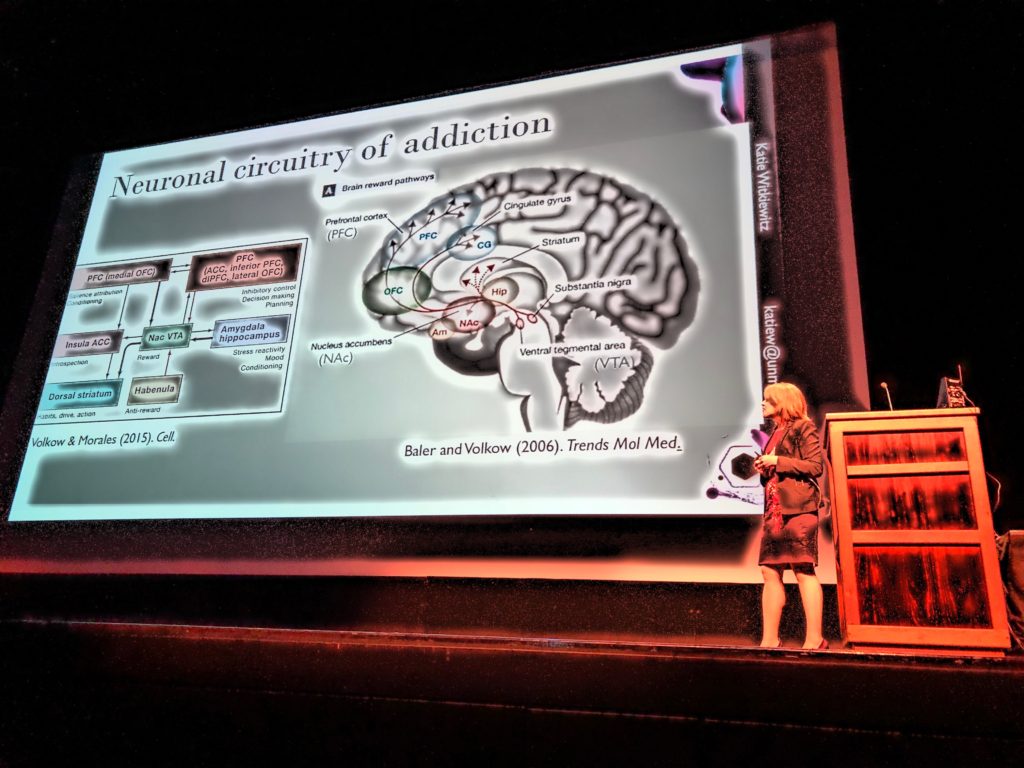
LEARN MORE: The Brain on Drugs: From Reward to Addiction
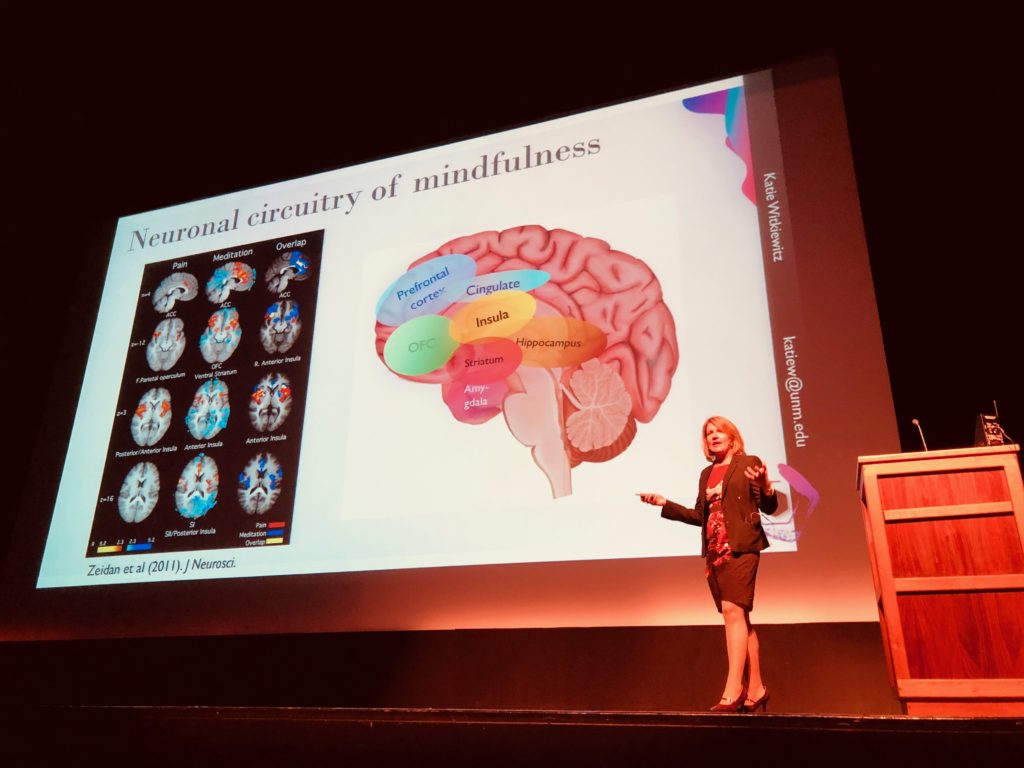
“Mindfulness is also a whole brain thing,” declared Katie. “And the same areas that get dysregulated in addiction are strengthened in mindfulness.”
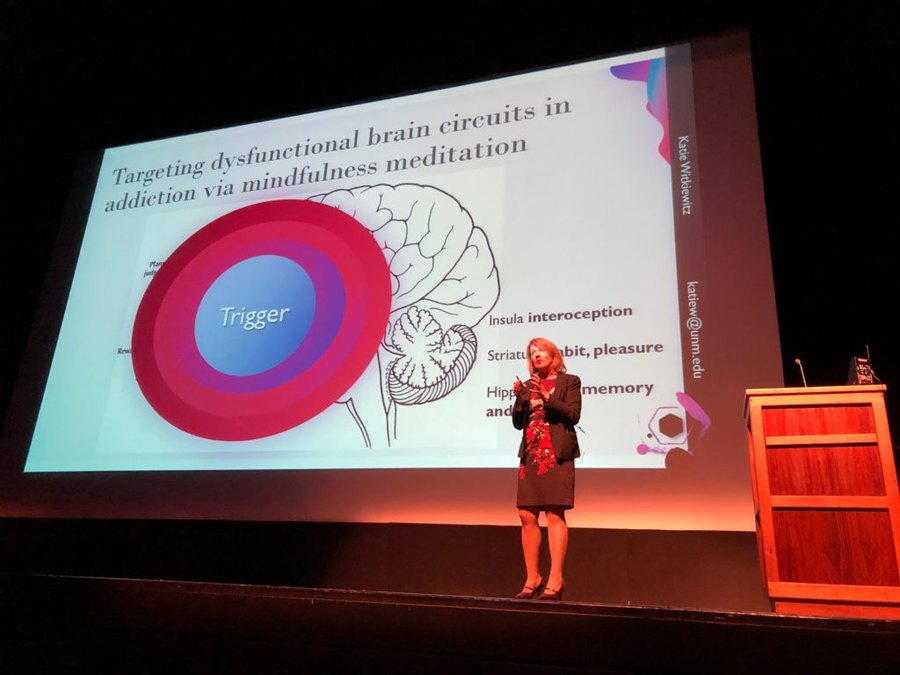
“Triggers drive brain activity…”
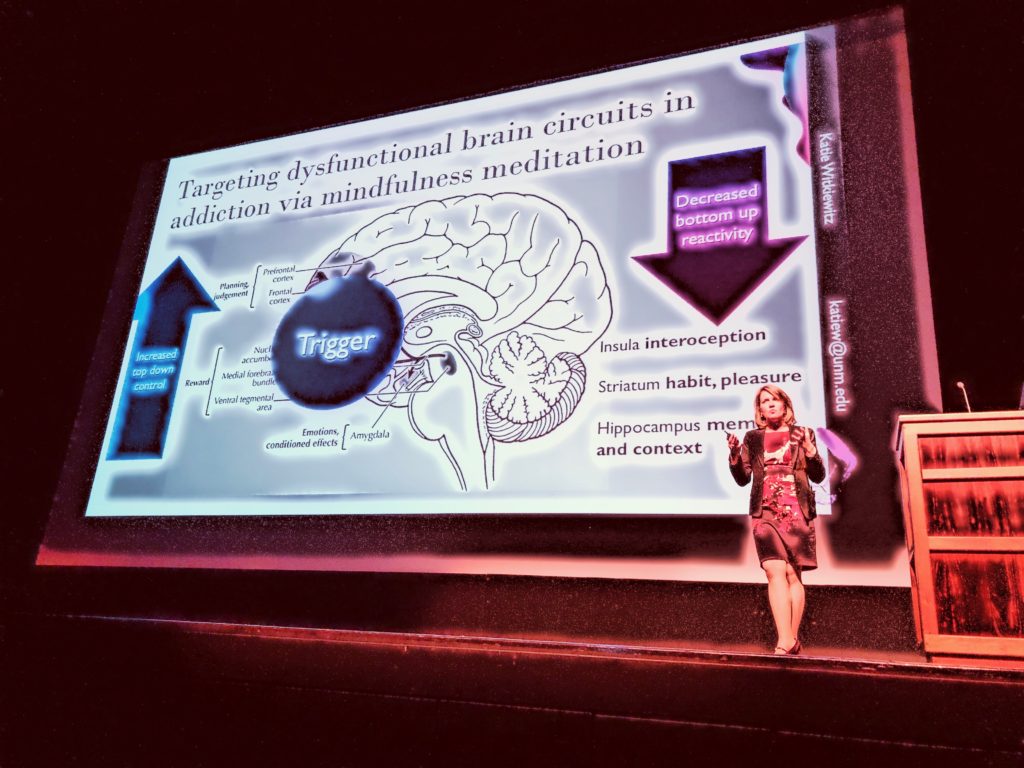
“And mindfulness training decreases that bottom up reactivity to triggers for drug relapse, while increasing our top down executive control over regulating our emotional, behavioral responses…”
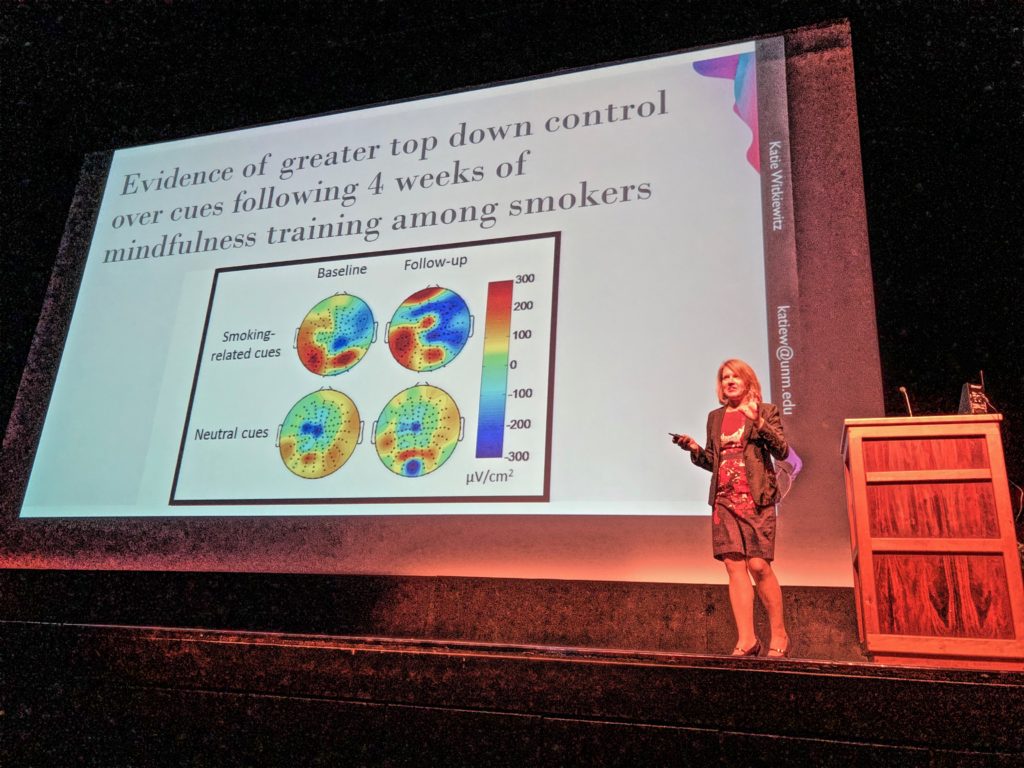
Several studies find evidence of greater frontal lobe engagement in subjects with training in mindfulness in response to cues (triggers) that are associated with drug use…
LEARN MORE: Mindfulness and Emotion Regulation: Insights from Neurobiological, Psychological, and Clinical Studies
This was such a powerful, compelling – and actionable – presentation!
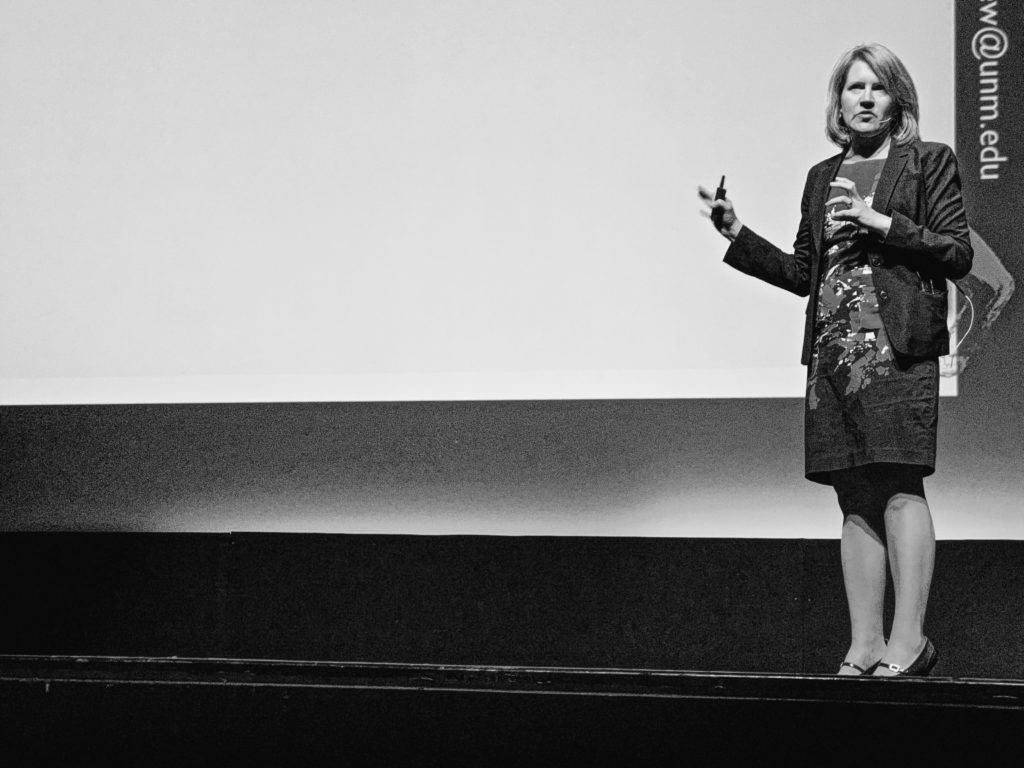
“Remember all is in motion, is growing, is you.” –Joy Harjo
It also illustrates a situation we encounter again and again. So many insights, practices, approaches and stories from people long ignored by large, dominant institutions (including funding agencies, universities, museums) offer tremendous potential for better outcomes and understanding, and by actually going places and listening to other people – and not just those who can pay you admission, or tuition – you share and engage in genuine discovery…
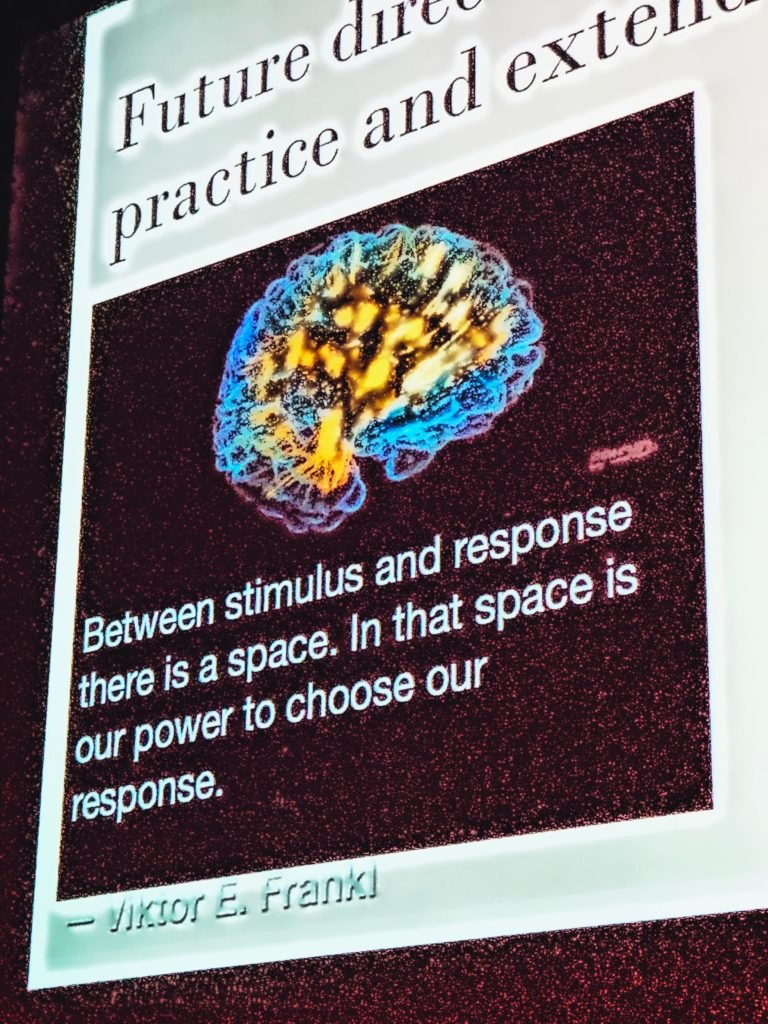
And, perhaps, find a thoughtful space between stimulus…and response.
So amazing to meet the awesome individuals working with @NWNoggin this evening! Bringing passionate expertise, hands on neuroscience, and brain art to the community. A great organization in Portland https://t.co/Fz9ihXqtLY https://t.co/nWLduxDa0p
— Katie Witkiewitz (@KatieWitkiewitz) May 7, 2019
So many thanks to Dr. Witkiewitz, Kate Stout of the OHSU Brain Institute, and our enthusiastic NW Noggin volunteers!


